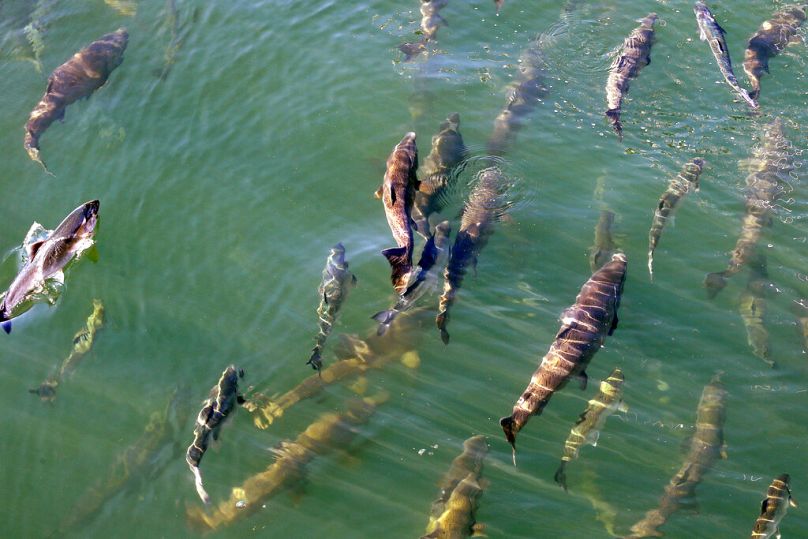Meteorologists are monitoring what they believe to be record-breaking marine heatwaves off northeast England and northwest Ireland.
Sea temperatures around the UK and Irish coasts are up to five degrees Celsius warmer than normal for this time of year, smashing records.
Parts of the North Sea are in a category four “extreme” marine heatwave, the US National Oceanic and Atmospheric Administration has warned.
Temperatures are particularly high around the north-east coast of England and the west of Ireland.
Warming seas could bring jellyfish and basking sharks closer to the shore, and cause poisonous algae to bloom.
The marine heatwave has deeply concerned marine scientists.
Bangor University physical oceanographer Thomas Rippeth said he has never known such temperatures at this time of year.
"The ocean is not like the atmosphere. It doesn't heat up and cool down quickly. It takes a long time to warm up and it takes a long time to cool down," he said.
"So, you tend to see over a whole year the sea temperatures around the UK, it might move around by about 10 or 12 degrees between the middle of winter and the middle of summer.
"Seeing these four or five degree differences from the norm are obviously quite big temperature differences."
What is causing the heatwave?
The heatwave has been caused by a multitude of factors - climate change, but also less Saharan dust and Arctic ice reflecting the sun’s warming rays. El Niño is also a contributing factor.
"What the dust does is it basically reflects a proportion of the sun's rays back to space," Rippeth explained.
"So, they're not available to warm the ocean. But the lack of that dust means that the sun's rays are a bit more intense, arriving on the sea surface and warming it up."
The marine heatwave could also be damaging to wildlife - warmer water, for instance, carries less oxygen so will deliver less oxygen down to marine life in the depths.
Elsewhere, phytoplankton, which plays an important role in the marine food chain, could be deprived of vital nutrients.
Last week, the UK’s Met Office said global sea surface temperatures for both April and May were the highest on record for those calendar months in a series stretching back to 1850.
The picture was even more stark in the North Atlantic, which saw a record-breaking temperature rise in May 2023.
The month was the warmest May on record since 1850, with temperatures about 1.25 degrees Celsius above average.
The Met Office said with the expected continued warming of the eastern tropical Pacific because of the emerging El Niño, it was likely global sea surface temperatures could challenge further records this year.












